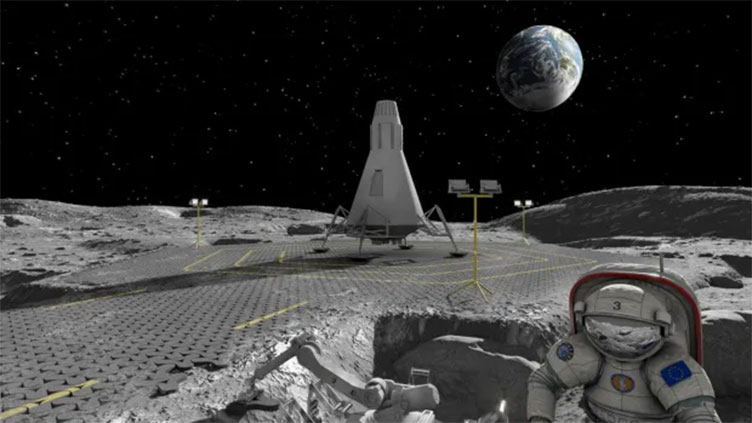Moon highways could be carved using giant beam of 'focused sunlight'

Technology
Researchers believe we might be able to create highways on the Moon
(Web Desk) - RESEARCHERS believe we might be able to create highways on the Moon for easier transportation.
A new study published in the journal Nature has shared how one day we might be able to carve out roads on the Moon.
"The next steps for the expansion of the human presence in the solar system will be taken on the Moon," the study reads.
"However, due to the low lunar gravity, the suspended dust generated when lunar rovers move across the lunar soil is a significant risk for lunar missions as it can affect the systems of the exploration vehicles."
One solution for this problem is to construct roads and landing pads on the Moon.
The paper proposes the use of concentrated light for paving such roads out on the Moon.
In the experiment, the team used a high-power CO2 laser as a substitute for the concentrated sunlight and a lunar regolith analog to replicate the lunar soil.
Lunar regolith is another world for lunar soil, or the rocks and dust that make up the Moon's surface layer.
After assessing different strengths, the researchers found a laser strength consistent with sunlight on the Moon.
"The results of this study proved the viability of this technique for manufacturing large samples with interlocking capabilities in situ that can be fabricated directly on the lunar surface and arranged for paving applications," the paper notes.
In conclusion, the study proved that it's possible to make large tiles on the Moon that slot into each other.
When combined together, the tiles work as a road or pavement that could make it easier for lunar rovers to move around.
"With this, lunar explorers could potentially create tiles around 250 millimeters (9.8 inches)," Science Alert explained.
In turn, this would reduce the amount of harmful dust that could ruin or clog equipment.
The next step for the team is to perfect the material for the tiles and make it more durable.



